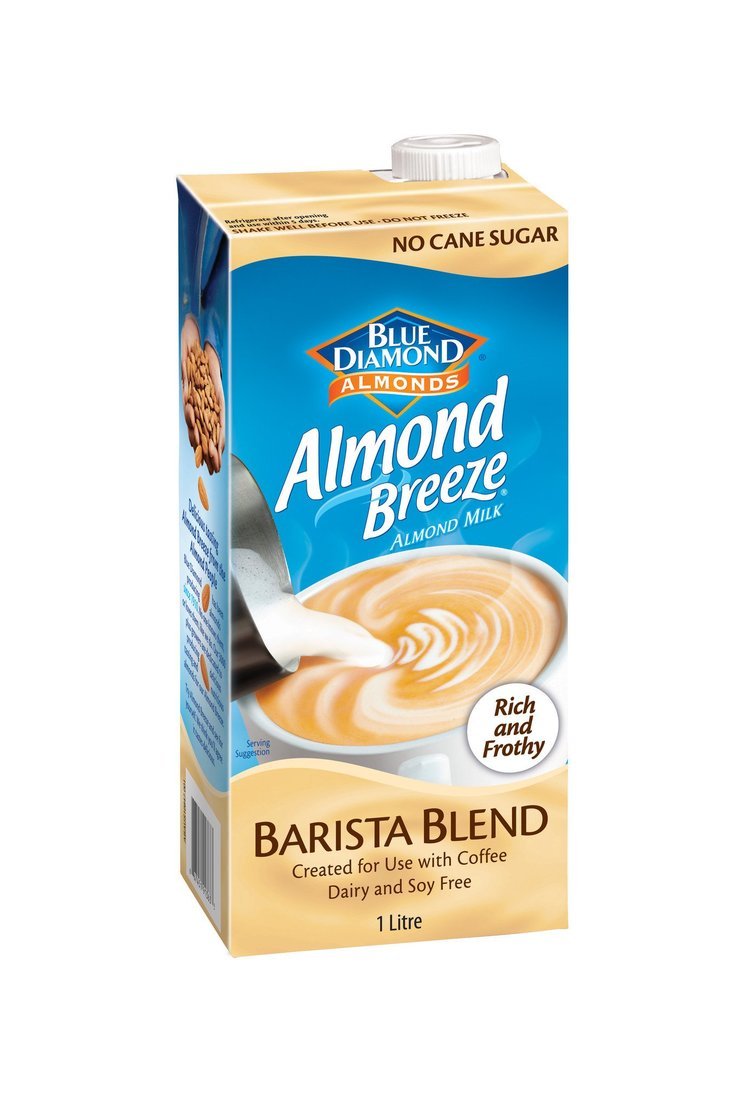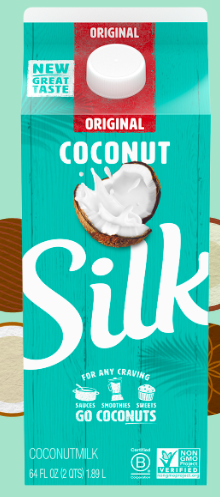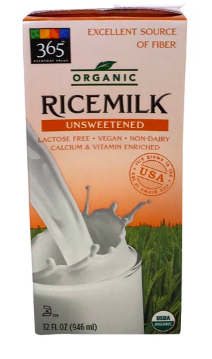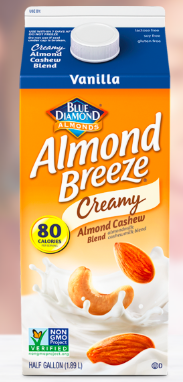The Ultimate Guide to Milk and Mylks (& Why I Quit Drinking Nut Mylks)
This guide has been a long time coming, not only because I get asked all the time but also because there is SO MUCH misinformation out there regarding milk and “mylk” alternatives. I am here today to shed some light on this topic, and explain why nut milks can actually be much more detrimental to your health than regular milk).
MILK
Let’s start here. Dairy: synonymous with the devil for many people these days. People get indigestion simply being in the same room as lactose, and no doubt there is some truth to dairy intolerances… but we’re not getting the whole picture (pun intended).
Our problems with cow’s milk are rooted in 3 different things:
1. LOW-FAT LIES
The low-fat movement of the previous 1/2 generations led dairy companies to create skim and 1% milk. I grew up on that shit, which was considered THE healthy thing at the time. “Drink your milk, you want strong bones!” I was having it at almost every meal, including school lunch programs. The problem with low-fat milk is that by removing the fat, you’re left with only the sugar. There is literally more sugar in skim milk than in a coca-cola, which is fucked up. When you remove the fat, you also remove all the fat-soluble nutrients (vitamin A, D, K, and E) that actually support bone health. So first off: say goodbye to low-fat milk, for good.
2. QUALITY
When milk is pasteurised and homogenised (heated and processed), it kills off the natural enzymes and kills some of it’s nutritional profile. Raw milk is illegal in some countries (absurd), but people get around it by either purchasing “bath wash” (aka raw milk sold only for “cosmetic purposes”) or going directly to the farm and having a connection. When consuming raw milk, you’re getting the most nutrients but also susceptible to bacteria, so like anything raw you want to make sure it’s organic and high quality. The fear surrounding raw milk is only valid when it comes to factory farmed garbage. Same goes for sushi really, when it’s high quality wild salmon, count me in. But if its farmed GMO-fed and pink dyed salmon? Hellsssssss nah homies.
The fat content of animal products contains the most nutrients and the most toxins, because living things store fat soluble nutrients and toxins in our fat. Weston A Price gets into this, and this is why animal products are essential to human health: there is a profile of nutrients you cannot get from only plants. But be mindful that that whole milk (or goat cheese, or marbled steak) will be either nutrient dense magic or poison, depending on the quality of life the animal had. You want pasture-raised, (organic/ biodynamic/ wild), animals that were raised on their natural feed (grass-fed, wild diet, etc).
Cows grazing on grass in the Swiss Alps. Grass-fedAF.
3. LACTOSE INTOLERANCES
Lactose intolerance is real. Most people tend to lose their ability to digest lactose as they age. It’s actually a genetic predisposition, some people keep the enzymes their whole lives, and many don’t. The way around this for many people is consuming dairy with lower lactose content, which comes from animals like goat, or bison. This is also why goat cheese is usually a more tolerated cheese among the dairy-allergy population. Another problem with cow’s milk is the A1/ A2 milk protein situation; basically cow’s have been hybridized (kind of like wheat), which has created a new strain of protein’s more difficult for us to digest. Before scrapping milk all together, you should make sure the milk you’re drinking is coming from heirloom (un-fucked-with) version of cows (aka A2 protein milk).
THE MILK-ALTERNATIVES LIE
The fear surrounding regular animal milk has propelled us into a generation of avid nut mylk drinkers, with most cafés around the world now offering alternatives like almond, oat, rice, coconut, and soy, and even more fringe mylks like cashew, pecan! Grocery stores have them stocked on the shelves, and more and more people are resorting to making their own nut mylks… but are they necessarily the healthier option? HELL-TO-THE-NO.
The 3 main reasons why dairy-free mylk alternatives can be even more harmful to your health than regular milk are as follows:
1. “HIDDEN” INGREDIENTS
I only put hidden in quotation marks because they’re only hidden to those who aren’t looking. Ask, and you shall receive. Whether you’re ordering a coconut milk matcha or are buying a bottle of cashew milk at your local co-op, you should always ask to see the container, and read the ingredients list.
Genuinely pure nut mylks (just filtered water and nuts) have an incredibly short shelf-life: which means most store bought mylks are full of added preservatives.
Pure nut mylks are either very watery or very expensive: companies either use very little actual nuts, and pump the mylk with (toxic) thickeners, or use a lot of nuts thus making the mylk quite pricey. Thickeners to look out for: rice flour, rice, tapioca, starch, potato starch, chickpea.
Added bullshit includes: canola oil, brown rice, any gums (guar gum, xanthan gum, carob bean gum, gellan gum), carrageenan, canola oil, sunflower oil, tapioca starch, tricalcium phosphate, sugar, dextrose, brown rice syrup, agave, maltodextrin, and good ol’ mr. natural flavours. Be very mindful of “natural flavours”, which in the food-additives industry is slang for “guaranteed poison”.
One of the biggest signs you’re in for a chemical shit-show is any nut mylk “barista blends”. Barista blend mean the mylk is made with ingredients to make it extra fluffy (easy to work with for a barista) and tasty. This means fillers, thickeners, cancer-causing carrageenan, and at least one kind of sugar (note the hilarious addition of “no cane sugar” on the Almond Breeze Barista Blend below. As if that somehow makes the thing healthy?!)
JUST BECAUSE SOMETHING IS “ORGANIC” OR “UNSWEETENED” DOESN’T MEAN IT’S LEGIT.
2. PHYTIC ACIDS AND LECTINS
This is a big one, because phytic acid and lectins are natural substances found in nuts, seeds, grains, and certain plants that prevent mineral absorption.These compounds are there to protect the integrity of the seed, nut, or plant so that it can survive out in the wild, so if a fox eats an apple for example, the phytic acid of the seeds protect them so that they can pass through the fox’s GI tract and be pooped out intact: aka the apple seeds fall into the earth, and the plant reproduces! Incredible! In nature, we would normally have very little contact with high doses of lectins and phytic acid because our ancestors were not eating bags of almonds nor were they consuming bowls of oats. These foods required a lot of preparation and processing, which is now done for us. Easy access to these foods means that we’re not only consuming them abundantly, but our fast-food mentality also means that we’re not properly preparing them to reduce exposure to the harmful ingredients.
Without going to deep, these lectins, phytic acids, and other anti-nutrients basically prevent our bodies from properly absorbing the minerals and vitamins in the foods we are eating. So you may be eating a diet abundant in organic fruits, veggies, and pasture raised meats… but if you’re also consuming shit loads of lectins, you might actually be nutritionally deficient in things like iron, zinc, or calcium.
In small doses, you don’t have to worry, and in fact they might actually benefit your immune system as hormetic stressors… but taken daily (multiple times a day), you’re most likely doing your body some harm.
To reduce our intake of these anti-nutrients, these nuts, seeds, grains, and vegetables need to be soaked, sprouted, fermented, or cooked. Even so, it doesn’t fully remove them.. but it does help.
When it comes to mylk alternatives, the problem is severe because most nut mylk companies do not soak or sprout the nuts, oats, rice, etc first… so basically what you’re drinking is lectin juice. I was horrified when I realized this, and this is the major reason why I no longer consume nut mylks or mylk alternatives whatsoever.
This list (provided by Chris Kesser’s website) highlights some of the main offenders when it comes to anti-nutrients. And as you can see, all your dairy-alternaitve mylk bases make the list. The list doesn’t include soy, because Chris is very vocal about how poisonous soy is, but these ingredients above are foods that we tend to consider part of a healthy diet. (More on soy a bit later).
3. QUALITY
Like real milk, quality control is a massive problem, because businesses looking to cut back costs and jump on the “nut mylks are healthy and popular” bandwagon means the market is flooded with bullshit.
Organic only: if the mylks are not organic, you’re not only taking in lectins and phytic acid, but also herbicides, pesticides, and most likely glyphosate (which is destroying your gut, and increasing the bioavailability of all the other toxins you’re exposed to throughout the day… among so. many. other. detrimental effects).
Water quality: these mylks are made with water as a base, so what water are they using? If the ingredients just list “water” then you’re probably also ingesting all the fun things that come with tap water (hello, chlorine, fluoride, heavy metals, pharmaceuticals, etc). Filtered water only (preferably reverse osmosis, or spring water)!
Other ingredients: touched upon up top, make sure your mylks aren’t filled with other bullshit.
SURE, IT’S ONLY A CUP. BUT IN DOING SO DAILY, YOU ARE SLOWLY POLLUTING YOUR BODY AND LITERALLY BEGGING FOR LONG TERM NEUROLOGICAL PROBLEMS, AUTOIMMUNE DISEASE, AND “MYSTERIOUS” ILLNESS.
THERE’S NO MYSTERY: YOU ARE WHAT YOU EAT. TREAT YOUR BODY LIKE A WASTELAND, AND YOU WILL BE GREETED BY ILLNESS.
THE SOY LIE
I hate to break it to you, but soy is not a health food. Soy contains estrogen mimicking hormones that are causing major imbalances in the human body. Needless to say men don’t need to be dumped with estrogen (hello, man titties), but women are equally harmed by fake estrogen. Our bodies are a symphony of hormonal fluctuations, and nature has it down to a science. Introducing artificial hormone mimicking compounds into the body regularly means anything from mood swings, to painful periods, to acne, and even infertility.
I’LL LET ME BODY PRODUCE ITS OWN HORMONES… THANKS!
If you have a hormone imbalance (say, a lack of estrogen), work with a qualified practitioner to uncover the cause of this deficiency- don’t just knock back some soy and hope everything will balance out.
1. THE CONSUMPTION OF SOY IS AS(SOY)CIATED WITH:
My passion against soy is real. Got “fuck soy” t-shirts made for a friend and I back in 2016.
estrogen dominance
infertility
weight gain
thyroid disorders
kidney failure
gallbladder cancer
hormone induced cancer
allergic reaction (redness of the skin, tingling in the mouth, itchy skin, swelling, abdominal pain and runny nose or problems breathing)
2. GENETICALLY MODIFIED
Almost all of the world’s soy is GMO. Look at the shelves that claim to have unlimited quantities of organic soy: it doesn’t add up. If you’re getting your “certified organic soy” from China (yes, it’s probably “made in Australia”, but with ingredients from China), then you’re consuming DNA-altering soy. Which itself is poison (see point #1).
3. OVER-CONSUMPTION, AND IMPROPERLY PREPARED (FERMENTED)
“But Japanese eat it as a part of their blue-zone, super centenarian lifestyles”!
First off, they consume heirloom soy. Secondly, it’s fermented using ancient techniques. And lastly, it’s traditionally consumed in in microscopic quantities. Things like natto, tofu, and other ancestral sources of soy are consumed as condiments, not as main meals. They don’t eat soy burgers, soy “tofurkey” and they most definitely do not drink soy milk. If you want to consume soy, ensure you’re eating it modestly, and that it’s coming from a gangster company that slow-ferments it. Basically if you’re living in the mainstream world and buying it at a grocery store, this is impossible. They sell mass-produced (probably GMO) soy-based products that have not been properly fermented, and are generally full of tonnes of other garbage. And soy milk is essentially hormone imbalancing waste bi-product of that whole situation.
SO WHAT’S THE SOLUTION?
TBH, this isn’t about providing you with a solution, it’s just about laying the facts out on the table to that you can start making informed decisions regarding your health. At the end of the day, you do you. Consume what you want, but understand that that splash of milk/ mylk daily does have an impact on your body, whether you know it or not.
Health is not an end goal, it’s an ever evolving process and journey. It’s about taking steps in the right direction, little by little. My own relationship with milk/ mylks has evolved and transformed (and even come fill circle regarding my views on animal milk): it’s a process. Don’t expect to just wake up one day and know everything or be “perfect”. There’s no perfect, there’s just a learning curve, and ever evolving goals.
MY CHOICE
Since coming to terms with these things, I personally no longer consume nut mylks that come from nuts. I am heavily lactose intolerant (even ghee triggers indigestion), but I am hoping that as I continue to heal my gut, my tolerance to dairy will strengthen to the point of better tolerating a mindful amount of lectins. Nut mylk lectin bombs, however, are out for good.
The one mylk I’ll consume is coconut milk, but only when it is organic and free from fillers & other garbage. The other day before ordering a coconut mylk matcha at a new organic café I was at (figured coco milk was better than tap water..), I asked to see the barista’s bottle. The ingredients listed dextrose, maltodextrin, artificial colours and flavours, canola oil, and SOY. WHAT THE HELL! Hard pass from me.
MAKING BETTER CHOICES
Like I said, perfection is not the goal.. but making better, and more importantly informed decisions, is a worthy mission.
If you can tolerate dairy: go organic, whole, preferably raw (aka unpasteurized and unhomogenized) or very low heated, from a trustworthy source. This is going to offer you the most nutrient-dense, unprocessed, life giving milk. Make sure it’s coming from A2 cows.
If you can’t handle cows milk, try smaller mammal (lower lactose) milk from sheep, goat, or even buffalo. Again, always organic, preferably raw (or very low heat pasteurized).
If that’s not working for you, make the leap over to non-animal based mylks, being mindful of:
Always organic, preferably coconut out of all the plausible ingredients (when it comes to lectins and phytates)
Preferably homemade- so you can soak the nuts, etc, and then discard of the lectin/ phytate filled water, and then blend the mylk with filtered or spring water, without adding in any other nasties.
If you’re going to get a pre-made mylk or a drink made at a café, read the labels, you don’t want any added sugars, or insidious ingredients. Odds are there will be some preservatives (not always), but when it’s store bought you can almost assume there always will be. You can’t escape it all, but you can definitely make sure there’s no dextrose, or hidden soy.
There are brands out there doing their best to minimize the health risks associated with milks and mylks. Going straight to the source of an organic local farm for your dairy, and either making your own (properly processed) nut/ seed/ grain mylk or paying extra for companies actually making their stuff properly. One of these companies is Malk. Heaps of respect for them (using sprouted nuts, filtered water, and nothing artificial).










